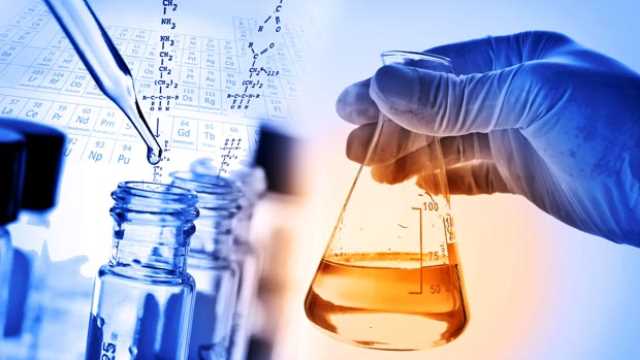Health Canada, the country’s regulating authority in the sphere of healthcare products, has published a guidance document dedicated to the risk-based classification system for in vitro diagnostic devices (IVDDs).
The document is intended to provide medical device manufacturers and other parties involved with additional clarifications regarding the current classification system and also with recommendations to be considered in order to achieve and sustain compliance with the applicable regulatory requirements. The authority’s staff will also use the guidance in the course of regulatory procedures related to in vitro diagnostic devices in order to ensure consistency, transparency, and effectiveness.

Table of Contents
The authority additionally emphasizes that due to its legal nature, the guidance does not introduce any requirements itself. In the event of any discrepancies with the provisions of the current Canadian legislation, the latter should prevail. Moreover, an alternative approach could be applied, provided such an approach complies with the applicable regulatory requirements and has been approved by Health Canada in advance, including assessment on sufficient justification to be provided by the interested party. The regulating authority also reserves the right to request additional information deemed reasonably necessary to assess the safety and effectiveness of a medical device subject to review. All such requests will be justified, while the decision based thereon – duly documented.
Regulatory Background
The current regulatory approach is based on the Medical Devices Regulations, employing a risk-based approach under which the scope of information to be provided by the interested party applying for a medical device license will depend on the risks associated with a medical device when used for its intended purpose. Nowadays, all in vitro diagnostic medical devices are divided into four classes (Class I – Class IV). The scope of requirements to be fulfilled is proportionate to the risk class to which the device is assigned. The present guidance describes the particular way the aforementioned risk-based classification should be applied in the case of in vitro diagnostic medical devices intended to be marketed and used in Canada.
According to the document, the general approach for the classification of in vitro diagnostic devices is based on the following criteria:
- The intended use of a medical device initially determined by the manufacturer and reflected in all the documentation accompanying the device, including technical specifications, instructions for use, and other information provided by the manufacturer;
- Data deriving from laboratory and near-patient testing;
- The assessment of the actual importance of the information the device provides to the diagnosis with regard to other information that might be available for healthcare professional using the device;
- Mode and efficacy of transmission, as well as consideration of other treatment options available;
- How the diagnosis results impact the patient, including potential consequences of misdiagnosing;
- Other patient-related factors.
The authority also mentions that the present guidance does not provide clarifications on whether the product in question should be subject to regulation as a medical device but only describes how existing classification rules should be applied in the case of in vitro diagnostic devices. According to the document, reagents, instruments, apparatus, equipment, or systems not manufactured, sold, or represented by manufacturers for use in in vitro diagnostic applications are not considered to be IVDDs. This applies even to the products that are used by laboratories to create their own in vitro diagnostic devices intended for internal use only.
Another important point related to medical devices intended for research use only is that, according to the document, such devices are exempt from the Medical Devices Regulations provided they have the appropriate indication and are used solely for the aforementioned purpose.
In certain cases, the provisions regarding controlled products could be applied as well – for instance, if the medical device in question contains substances subject to special supervision under the appropriate regulations.

Definitions
The document further provides the definitions of the most important terms and concepts used in the context of classification of in vitro diagnostic medical devices, including the following:
- In vitro diagnostic devices – reagents, articles, instruments, apparatus, equipment or systems, including calibrators, control materials, software, whether used alone or in combination, manufactured, sold or represented for in vitro diagnostic use. The guidance also mentions that the definition of an IVDD used in the current legislation is aligned with definitions used in other jurisdictions, such as the US, Australia, and the European Union.
- Test or assay – an analysis to determine the presence, absence or quantity of a specific chemical or substance.
- Test kit – an IVDD that consists of reagents or articles or any combination of these, and that is intended to be used to conduct a specific test or assay.
- Transmissible agents – conventional infections agents such as bacteria, viruses, fungi, and protozoa, as well as prions and toxins.
Guidance for Implementation
The document provides a detailed explanation of the applicable classification rules together with some examples provided to assist medical device manufacturers and other parties involved in applying these rules correctly. Should the medical device in question fall outside the scope of any of the rules mentioned in the guidance, the general risk-based approach and basic classification principles should be applied.
The first classification criterion divides in vitro diagnostic medical devices depending on the transmissible agents. The medical device classification rules covers by this section include:
- Rule 1: IVDDs used for donor screening;
- Rule 2: IVDDs used to determine disease status or immune status (plus several subrules);
- Rule 3: IVDDs used for patient management purposes (plus subrules).
Another block of classification rules covers in vitro diagnostic devices intended for uses other than for transmissible agents. This block includes such rules as:
- Rule 4: IVDDs used for disease status and for patient management;
- Rule 5: IVDDs for immunological typing.
The rest of the rules are deemed to be special rules covering additional aspects related to in vitro diagnostic devices. These rules include:
- Rule 6: Near-patient IVDDs;
- Rule 7: IVDDs specifically intended to be used together;
- Rule 8: Class I IVDDs;
- Rule 9: Special classification (the rule prescribing how the device should be classified even if it meets the requirements covered by other rules – for instance, the rule applies for near-patient IVDD for the detection of pregnancy or for fertility testing).
Apart from the general description of classification rules to be applied for in vitro diagnostic medical devices, the annexes to the guidance document issued by Health Canada contain several flowcharts one can use to determine the correct classification of an IVDD in question. The use of brief descriptions and the Yes/No approach allows to simplify this process and make the determination much more accurate.
In summary, the present Health Canada guidance provides additional clarifications with regard to classification rules for medical devices. The document describes in detail each of the rules and highlights the most important aspects to be considered by the parties involved.
Sources:
How Can RegDesk Help?
RegDesk is a next-generation web-based software for medical device and IVD companies. Our cutting-edge platform uses machine learning to provide regulatory intelligence, application preparation, submission, and approvals management globally. Our clients also have access to our network of over 4000 compliance experts worldwide to obtain verification on critical questions. Applications that normally take 6 months to prepare can now be prepared within 6 days using RegDesk Dash(TM). Global expansion has never been this simple.

